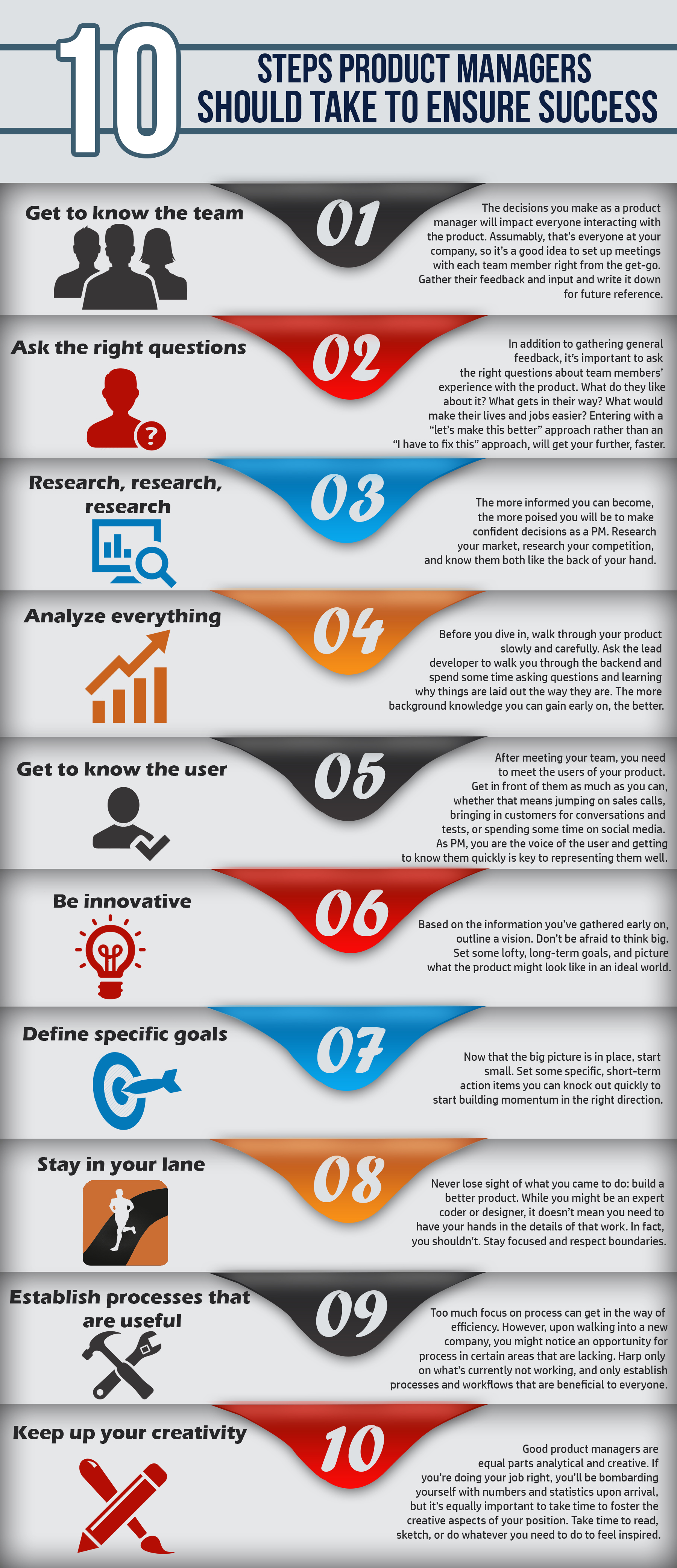Whether joining the ranks of a large company or taking the lead at a small start-up, a product manager’s first 30 days at a new company are a crucial time period. Taking the right steps during the first month on the job has the potential to set up a positive trajectory towards success. Start off on the wrong foot, however, and you could find yourself scrambling to pick up the slack for a long time to come. Here are a some pointers to ensure a smooth transition into your new product manager role.
- Get to know the team
- Ask the right questions
- Research, research, research
- Analyze everything
- Get to know the user
- Be innovative
- Define specific goals
- Stay in your lane
- Establish processes that are useful
- Keep up your creativity
The decisions you make as a product manager will impact everyone interacting with the product. Assumably, that’s everyone at your company, so it’s a good idea to set up meetings with each team member right from the get-go. Gather their feedback and input and write it down for future reference.
In addition to gathering general feedback, it’s important to ask the right questions about team members’ experience with the product. What do they like about it? What gets in their way? What would make their lives and jobs easier? Entering with a “let’s make this better” approach rather than an “I have to fix this” approach, will get your further, faster.
The more informed you can become, the more poised you will be to make confident decisions as a PM. Research your market, research your competition, and know them both like the back of your hand.
Before you dive in, walk through your product slowly and carefully. Ask the lead developer to walk you through the backend and spend some time asking questions and learning why things are laid out the way they are. The more background knowledge you can gain early on, the better.
After meeting your team, you need to meet the users of your product. Get in front of them as much as you can, whether that means jumping on sales calls, bringing in customers for conversations and tests, or spending some time on social media. As PM, you are the voice of the user and getting to know them quickly is key to representing them well.
STOP: Remove errors in your email campaign through MyCrowd Email Testing.
Based on the information you’ve gathered early on, outline a vision. Don’t be afraid to think big. Set some lofty, long-term goals, and picture what the product might look like in an ideal world.
Now that the big picture is in place, start small. Set some specific, short-term action items you can knock out quickly to start building momentum in the right direction.
Never lose sight of what you came to do: build a better product. While you might be an expert coder or designer, it doesn’t mean you need to have your hands in the details of that work. In fact, you shouldn’t. Stay focused and respect boundaries.
Too much focus on process can get in the way of efficiency. However, upon walking into a new company, you might notice an opportunity for process in certain areas that are lacking. Harp only on what’s currently not working, and only establish processes and workflows that are beneficial to everyone.
Good product managers are equal parts analytical and creative. If you’re doing your job right, you’ll be bombarding yourself with numbers and statistics upon arrival, but it’s equally important to take time to foster the creative aspects of your position. Take time to read, sketch, or do whatever you need to do to feel inspired.
Above all, dive into your new PM role with positive enthusiasm and a strong desire to learn. Do that, and you’ll give your team, and yourself, the confidence and assurance that you will manage your product with skill and expertise.

Add this infographic to your website by copying and pasting the following embed code:


